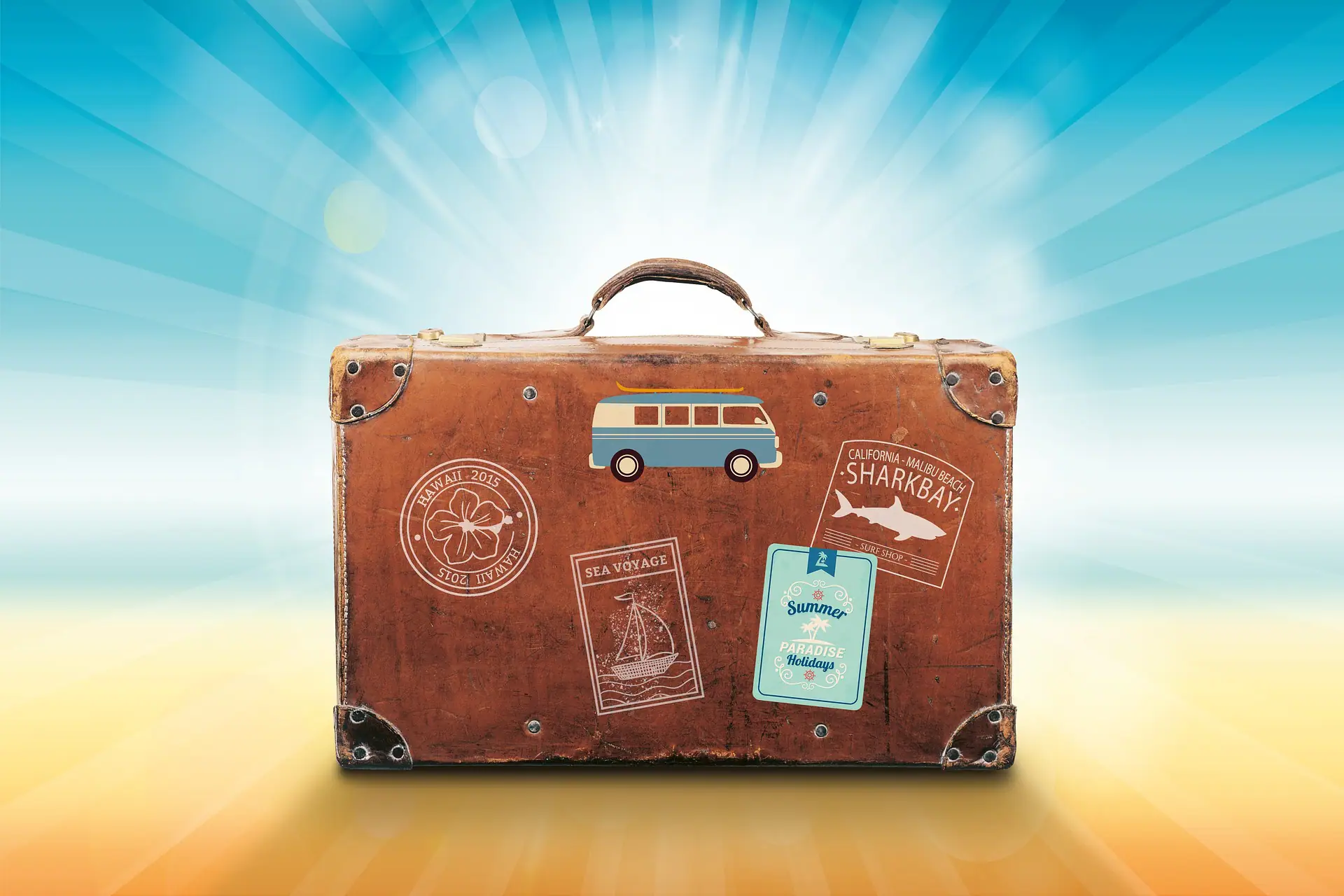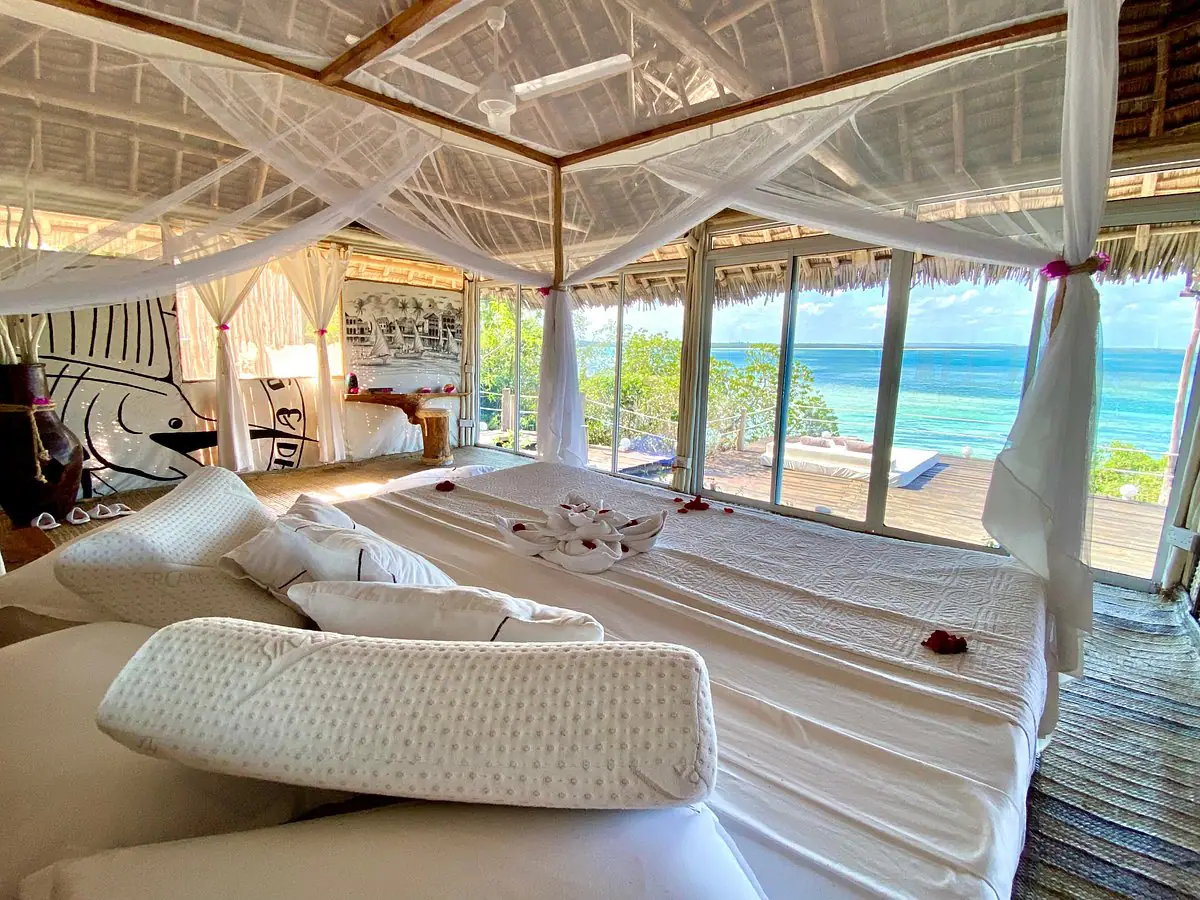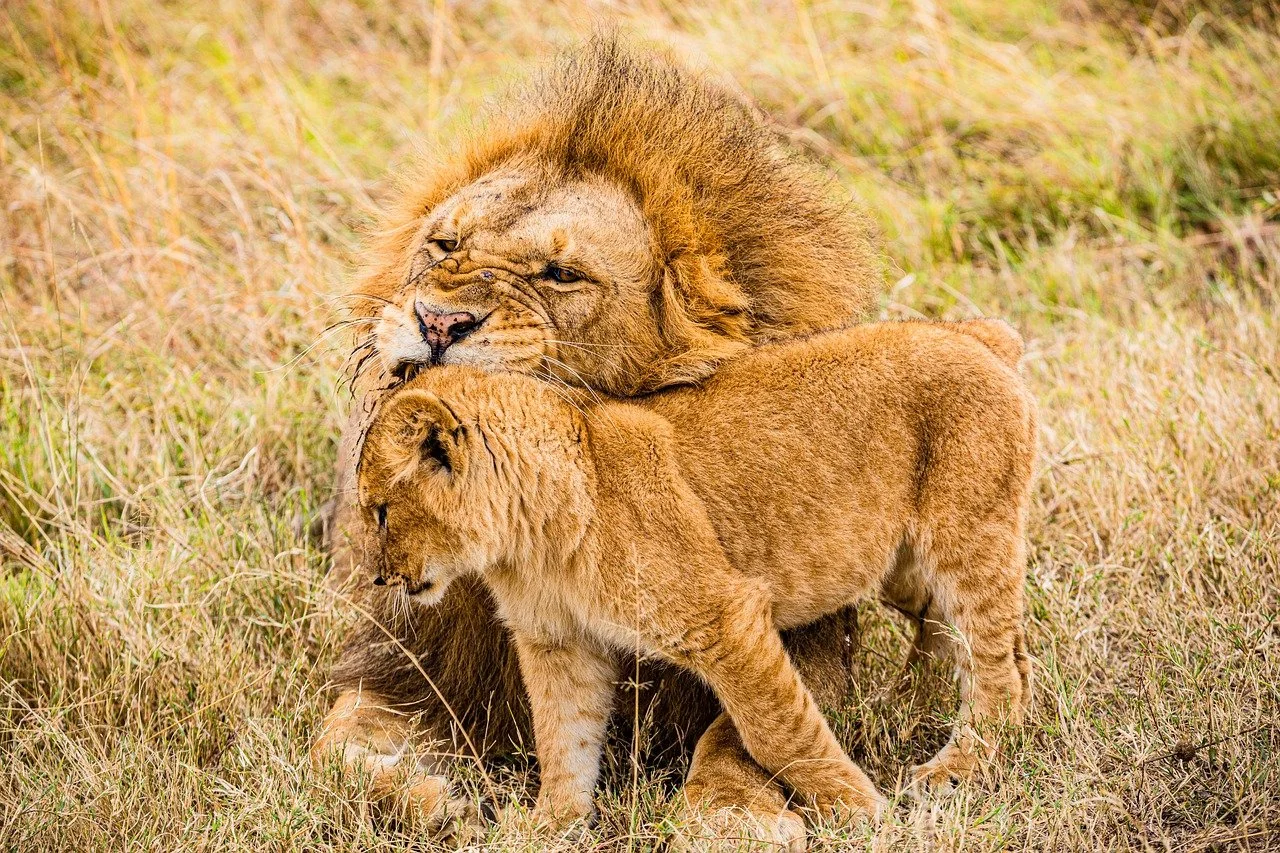Kenya to Masai Mara National Reserve - Packages, Cost and More

Imagine embarking on an unforgettable adventure as you traverse the breathtaking landscapes of Masai Mara, witnessing diverse wildlife and immersing yourself in the rich culture of the Maasai people. That is exactly the surreal experience that awaits you the moment you book your trip to Masai Mara with us.
But how do you plan the best Masai Mara safari? What is the best time to Visit Maasai Mara game reserve? And can you combine a safari in Maasai Mara with game drives in Serengeti National Park?
In this article, we will share everything you need to travel from Kenya to Masai Mara, from planning your trip to capturing stunning wildlife photos. We are the local experts of Kenya’s Masai Mara travel, and we promise to make your trip to Maasai Mara an adventure of a lifetime.

Contact Us to Start Planning Your Masai Mara National Park Safari
We invite you to call or to WhatsApp us at +254719222430 or to email us via safarioffers@kenyaluxurysafari.co.uk or james@ajkenyasafaris.com to start planning your trip to Kenya today.
We are the local experts of Kenya travel, and we promise to plan the best Maasai Mara tour for you.
Masai Mara Migration Video
Our Most Booked Masai Mara National Reserve Safaris
Kenya to Masai Mara Safari packages - Photos by Our Clients
Planning Your Trip from Kenya to Masai Mara

A successful trip to Masai Mara hinges on careful planning. This includes choosing the perfect time to visit, determining the ideal duration for your stay, and packing the right essentials for your safari adventure.
Here are some detailed tips and suggestions to make your Masai Mara experience an extraordinary one.
Nairobi to Masai Mara – Best Time to Visit
The dry season from June to October is the best time to travel to Masai Mara. This period is characterized by sunny days and short grass, offering abundant wildlife and a chance to easily spot animals. During this period, the weather is generally dry and cool, with average temperatures ranging from 10°C to 25°C (50°F to 77°F). The grass is shorter, and animals gather around water sources on the endless plains, making it a photographer’s paradise.
Recommended Duration
To fully experience the awe-inspiring wildlife and activities in Masai Mara National Reserve, including what the Mara Triangle has to offer, we recommend a 3-5 day safari. This duration allows you to participate in exciting activities such as:
- visiting Maasai homes
- experiencing traditional dances and songs
- learning how to make fire
- witnessing spear and club throwing
- Witnessing the annual wildebeest migration
For those wanting to witness the Great Wildebeest Migration or indulge in birdwatching, a longer stay may be necessary.
Kenya to Masai Mara – Essential Items to Pack
When packing for your Masai Mara adventure, essential items include:
- Comfortable clothing
- A hat
- Sunscreen
- Binoculars
- A good camera
- Your travel documents
Opt for warm and neutral-colored clothes, long shirts and pants, sun protection, sunglasses, and sturdy shoes.
Pack the following items for your safari:
- A warm sweater or fleece
- A thin windproof jacket
- A warm hat for early morning and evening game drives
- A reliable pair of binoculars to enhance your game viewing experience
These items will ensure you are prepared and comfortable during your safari.
Travel Options: Getting to Masai Mara from Nairobi

Reaching Masai Mara from Nairobi is straightforward, with a variety of travel options at your disposal, including flights, private transfers, and group tours. Each method has distinct advantages, tailored to different preferences and budgets. In the following section, we will examine these options and aid you in choosing the most suitable one for your adventure.
Flights
Flights are the quickest and most convenient way to reach Masai Mara from Nairobi, with a flight duration of only 45 minutes. Airlines such as Safarilink Aviation, AirKenya Express, and Fly540 operate direct flights between the two destinations. The average cost of flights ranges from $200 to $400 per person for a round trip.
With multiple airfields serving the camps and lodges in the reserve, including Kichwa Tembo Tented Camp, you’ll be able to start your safari adventure in no time.
Private Transfers
Private transfers offer flexibility and personalized service for your journey to Masai Mara. With door-to-door service, private transfers pick you up from your desired location in Nairobi and drop you off directly at your accommodation in Masai Mara. The average cost for private transfers ranges from $200 to $300, and the journey typically takes around 5-6 hours.
Booking a private transfer with companies like Suntransfers or Perfect Wilderness Tours ensures a comfortable and smooth journey to your safari destination.
Group Tours
Group tours provide a more affordable and social travel experience, allowing you to share the safari adventure with other travelers. The cost of a group tour can range from \$200 to \$500 per person per day, depending on the duration, accommodations, and inclusions. Group tours typically include:
- Accommodation
- Transportation
- Game drives
- The guidance of experienced tour guides
With a group tour, you’ll not only enjoy the wildlife and scenic beauty of Masai Mara but also forge new friendships and share unforgettable experiences.
Accommodation Choices in Masai Mara
Masai Mara offers a wide range of accommodations to suit every traveler’s budget and preferences, from luxury lodges to budget-friendly camps and maasai pastoral ranches. No matter where you choose to stay, you’ll be surrounded by abundant wildlife and stunning landscapes, making your safari experience truly unforgettable.
Luxury Lodges
Luxury lodges in Masai Mara offer top-notch amenities and services for a comfortable and indulgent stay. Some of the features you can expect include:
- Spacious accommodations
- Private bathrooms
- Gourmet dining options
- Swimming pools
- Spa and wellness facilities
- Personalized service
Prices for luxury lodges can range from \$500 to \$1,500 per person per night, depending on the lodge and time of year. By staying at a luxury lodge, you’ll be able to relax in style after an exhilarating day of wildlife encounters.
Mid-range Accommodations
Mid-range accommodations in Masai Mara provide a balance between comfort and affordability. These lodgings offer:
- Cozy rooms
- Private bathrooms
- Hot water showers
- Electricity
- Dining facilities
- Some even feature Wi-Fi, swimming pools, and outdoor seating areas.
Mid-range lodges, such as Ashnil and Mara Engai, typically cost around $180 per person per night.
Enjoying the beauty of Masai Mara without breaking the bank is entirely possible with these fantastic mid-range options.
Budget-Friendly Camps
Budget-friendly camps in Masai Mara offer basic amenities and a more authentic safari experience. With rates starting at around \$15 per person, per night for camping with your own tent, budget camps provide an affordable option for travelers eager to experience the wonders of Masai Mara. While amenities may be more limited than luxury lodges or mid-range accommodations, the charm of staying close to nature and the thrill of encountering wildlife up close make budget-friendly camps an exciting choice for adventurous travelers.
Experiencing the Great Wildebeest Migration
The Great Wildebeest Migration is a bucket-list experience for any wildlife enthusiast visiting Masai Mara. Witnessing this incredible natural phenomenon involves understanding its significance and finding the best spots to observe the event.
Here’s a closer look at the details of this awe-inspiring spectacle.
Significance of the Migration
The Great Wildebeest Migration is a natural phenomenon where millions of wildebeest, zebras, and gazelles move across the Serengeti-Mara ecosystem in search of fresh grazing. This migration is essential for the food chain and ecological functioning of the area, helping these animals find fresh grazing lands and water sources.
However, climate change, including droughts and floods, is shrinking the migratory herds and threatening the survival of the ecosystem.
Best Spots to Witness the Event
The best spots to witness the Great Wildebeest Migration include the Mara River and various crossing points along the reserve’s borders. The Mara River is a hub of activity during the migration, as enormous crocodiles await their prey in the river’s depths, making for dramatic river crossings.
Timing is crucial, as the peak migration period occurs from August to November, offering the best opportunities to observe this breathtaking event.
Must-See Attractions and Activities in Masai Mara

Your Masai Mara safari adventure would be incomplete without partaking in some of the must-see attractions and activities the reserve has to offer. From exhilarating game drives to captivating hot air balloon safaris and culturally enriching Maasai village visits, there is something for everyone in this stunning wildlife sanctuary.
Game Drives
Game drives are the quintessential safari experience, offering the opportunity to spot a variety of wildlife up close, including the Big Five – lion, leopard, elephant, buffalo, and rhino. The best time of day for game drives is early morning from 6:30 am to 11:00 am and late afternoon from 3:30 pm to 6:30 pm.
With expert guides at the helm, you’ll be able to witness the incredible wildlife of Maasai Mara, also known as Masai Mara, in their natural habitat at the Maasai Mara National Reserve, formerly referred to as the Maasai Mara Game Reserve, located in South West Kenya.
Hot Air Balloon Safari
For a unique and awe-inspiring perspective of the Masai Mara reserve, a hot air balloon safari is an absolute must. Float high above the plains, taking in the breathtaking landscapes and abundant wildlife below, as you glide silently over the Mara River and forests.
The hot air balloon safari lasts approximately one hour and typically begins at 5:00 am, with takeoff at the launch site. The cost of a hot air balloon safari ranges from \$400 to \$600 per person, but the memories you’ll create are priceless.
Maasai Village Visit
A visit to a Maasai village, home to the Maasai tribe, offers a truly unique cultural experience, providing an opportunity to:
- Learn about the traditional way of life of the Maasai people
- Interact with the Maasai community
- Witness their traditional dances and rituals
- Gain fascinating insights into their customs, beliefs, and traditions.
By engaging with the local community, you’ll not only enrich your understanding of the Maasai people but also support their livelihoods and promote sustainable tourism in the region.
Responsible Tourism: Supporting Conservation and Local Communities
Actively supporting responsible tourism in Masai Mara is vital in preserving the reserve’s distinct ecosystems and uplifting local communities. Taking part in conservation efforts and building connections with the Maasai people will ensure your visit leaves a beneficial and enduring imprint on this extraordinary destination.
Conservation Efforts
Conservation efforts in Masai Mara, including those in the Mara North Conservancy, aim to protect the reserve’s wildlife and ecosystems. Initiatives include:
- Anti-poaching patrols
- Community-based conservation
- Wildlife monitoring and research
- Habitat restoration
- Sustainable tourism practices
- Education and awareness programs
By supporting the efforts of Trans Mara County Council, you can play a part in safeguarding the future of Masai Mara’s diverse wildlife and habitats.
Engaging with Local Communities
Engaging with local communities in Masai Mara helps support their livelihoods and promote sustainable tourism. Here are some ways you can contribute:
- Visit Maasai homes and learn about their culture
- Participate in cultural activities organized by the local communities
- Support lodges and safari operators that involve and benefit the local communities
By doing these things, you can contribute to the well-being of the Maasai people and the preservation of their unique heritage.
Additionally, responsible tourism encourages the development of sustainable practices and provides financial support to conservation initiatives.
Tips for Capturing Stunning Wildlife Photos
To capture stunning wildlife photos during your Masai Mara safari, it is key to equip yourself with suitable camera gear and master crucial wildlife photography techniques. A bit of preparation and practice will allow you to encapsulate the beauty of the Masai Mara in your photographs.
Camera Gear Recommendations
A DSLR or mirrorless camera with a telephoto lens is recommended for wildlife photography in Masai Mara. Top options include:
- Canon EOS R5
- Nikon Coolpix P1000
- Sony Cyber-shot RX10 IV for DSLRs
- OM SYSTEM OM-1
- Canon EOS R7
- Nikon Z6 for mirrorless cameras
Pairing your camera with the right lens, such as a 400mm 2.8 or a 150-600mm lens, will help you capture truly exceptional wildlife images.
Techniques for Capturing Wildlife Moments
Patience, understanding animal behavior, and using the right camera settings are essential techniques for capturing wildlife moments in Masai Mara. By studying animal behavior, you can position yourself in the right place at the right time to capture captivating moments.
Experiment with different shutter speeds, white balance settings, and autofocus to achieve the perfect shot during your nature walks, and don’t forget to enjoy the process of capturing the awe-inspiring beauty of Masai Mara’s wildlife.
Summary
In conclusion, a safari adventure in Masai Mara offers a once-in-a-lifetime experience, immersing you in the abundant wildlife, breathtaking landscapes, and rich Maasai culture. With careful planning, responsible tourism practices, and a spirit of adventure, you’ll create incredible memories that will last a lifetime. So, pack your bags and embark on an unforgettable journey to the heart of the African savannah – Masai Mara awaits!
Frequently Asked Questions
Next, we look at the most common questions we get about Kenya to Masai Mara Safari Packages. These include:
- How do I get to Masai Mara from Kenya?
- How long is the flight from Kenya to Masai Mara?
- How much does it cost to go to the Masai Mara?
- How much does a 10-day safari cost in Kenya?
- Why is Masai Mara National Reserve famous?
How do I get to Masai Mara from Kenya?
Fly to the Masai Mara from Nairobi Wilson Airport (WIL) for a short 45-60 minute flight to get there. The reserve is also easily accessible by scheduled flight from Nairobi, often heading down to the coast or crossing the border into the Serengeti. Book your ticket now for an unforgettable fly-in safari experience!
How long is the flight from Kenya to Masai Mara?
Take a thrilling 45-60 minute flight from Nairobi’s Wilson Airport to the spectacular Masai Mara!
How much does it cost to go to the Masai Mara?
Experience the thrill of the Masai Mara for just $80 a day! Enjoy this breathtaking reserve and all it has to offer.
How much does a 10 day safari cost in Kenya?
Experience a classic 10-day Kenyan safari and be amazed by all that it has to offer, from exclusive safaris costing more than $1,000 per person per night to budget options from just $125 per day!
Why is Masai Mara National Reserve famous?
Masai Mara National Reserve is an incredible natural haven, boasting large populations of Lion, Cheetah, Elephant, African Buffalo and Rhino.
